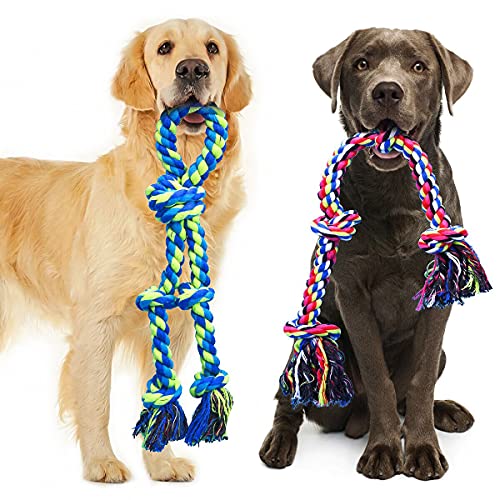How Understanding Your Golden Retriever’s Drives Can Lead to a Happier, Healthier Companion
As a seasoned dog expert who has worked with thousands of dogs through shelters and breeders, I understand firsthand the importance of understanding your dog’s drives. For Golden Retriever owners, understanding your dog’s drives is especially crucial, as it can greatly affect your dog’s behavior and overall well-being.
In this article, we’ll delve into the various types of dog drives and their purpose, specifically how they affect Golden Retrievers. We’ll also provide practical ways to manage and work with your Golden Retriever’s drives, ultimately reaping the benefits of a happy and healthy canine companion.
As a new Golden Retriever owner, learning about your dog’s drives may seem overwhelming, but rest assured that this knowledge will lead to a stronger bond and more fulfilling life with your furry friend. So if you’re ready to learn how to better understand and work with your Golden Retriever’s drives, keep reading.
Understanding dog drives and their purposes
As a seasoned dog trainer who has worked with thousands of dogs through shelters and breeders, I have come to understand the importance of understanding a dog’s drives. This is especially crucial when it comes to your beloved Golden Retriever.
A drive can be defined as an innate biological urge that motivates a dog to act in a certain way. These drives are responsible for shaping your Golden Retriever’s behavior and reactions, which ultimately determines how they interact with you and the world around them.
Understanding these drives is essential for any new Golden Retriever owner. For example, if your golden retriever exhibits high prey drive (a strong instinctual desire to chase after small animals), then taking them on walks without proper training or supervision may lead to disastrous consequences.
On the other hand, knowing that your golden retriever has high food drive means that you can use treats strategically during training sessions as rewards for good behavior.
By being aware of their natural instincts and behaviors driven by those instincts, owners can work more effectively with their dogs through positive reinforcement training methods tailored specifically towards each individual pup’s personality traits and genetic predispositions- ensuring both pet owners’ safety while fostering greater bonds between human companionship & canine loyalty alike!
How do drives specifically affect Golden Retrievers?
As someone who has worked with thousands of dogs through dog shelters and breeders, I can attest to the fact that every breed has its unique drives. Golden Retrievers are no exception.
Golden Retrievers are known for their friendly demeanor and eagerness to please their human companions. However, they also possess a strong prey drive and a desire to retrieve objects, which is why they excel in activities like hunting or retrieving games.
It’s important for new Golden Retriever owners to understand these drives so that they can properly train and socialize their furry friend. For example, if your pup displays a strong prey drive, it’s best to supervise them around small animals like cats or squirrels. Alternatively, if your dog loves retrieving objects but struggles with impulse control when seeing something interesting across the street during walks (like cars), practicing obedience training will help him learn self-control before he bounds after things without thinking first.
Properly channeling these drives through training will not only make your Golden Retriever an obedient companion but also prevent any destructive behavior that may arise from uncontrolled impulses – such as chewing on furniture or digging holes in the yard out of boredom!
In conclusion: understanding how specific dog-drives affect golden retrievers is crucial for new pet owners looking forward towards developing healthy relationships with their pets while ensuring discipline is instilled into them right from puppyhood!
Ways to Manage and Work With Your Golden Retriever’s Drives
Golden Retrievers are a beloved breed for many reasons, but their strong drives can sometimes be a challenge for new dog owners. Understanding and managing these drives is essential for creating a happy and well-behaved pup.

« getting your puppy used to wearing a leash and collar
resource guarding what it is and how to cure or prevent it »
Firstly, it’s important to recognize that all dogs have different drives – instincts or motivations that drive their behavior. In Golden Retrievers, common drives include retrieving (of course!), socializing with people and other animals, and exploring.
To manage these drives effectively, start by providing plenty of opportunities to satisfy them in healthy ways. For example, if your pup loves retrieving toys or balls endlessly on walks or at the park then make sure you provide ample time each day for this activity as it satisfies their natural instincts. Similarly if they love playing with other dogs make sure they get lots of interaction with others in order to keep them happy.
However controlling excessive behaviors related to those innate desires is also very important such as not letting your golden retriever jump on strangers when out walking due to its friendly nature towards everyone which could scare someone away who isn’t fond of dogs..
A trainer can help you learn how best work through any difficulties arising from exaggerated behaviour caused by strong dog-drives such as jumping up on visitors which may come about from inappropriate training so don’t hesitate seeking professional assistance here!
By understanding how your Golden Retriever’s natural tendencies affect his behavior and learning effective management techniques accordingly will ensure both pet owner happiness along side an overall harmonious environment within the household!
The benefits of understanding and utilizing your Golden Retriever’s drives
Understanding your Golden Retriever’s drives can greatly improve the relationship between you and your furry friend. Drives refer to innate instincts that drive a dog’s behavior, such as prey drive, play drive, food drive, and social drive.
As a dog trainer who has worked with thousands of dogs through shelters and breeders alike, I cannot stress enough how important it is to understand your Golden Retriever’s drives. Not only will this help you train them more effectively but also create a happier home environment for both you and your pup.
For example, if your Golden Retriever has a high play or prey instinct (common in this breed), incorporating games like fetch or hide-and-seek into their daily routine can help satisfy those drives in a positive way. Similarly, if they have high food motivation (also common), using treats as positive reinforcement during training sessions can be highly effective.
It is also crucial to understand that each dog has unique drives based on their genetics and individual experiences. By paying attention to cues like body language and vocalizations during different situations (such as meeting new people or encountering other animals), owners can better identify which specific drives are at play in any given moment.
In summary: understanding and utilizing your Golden Retriever’s natural instincts through proper training techniques not only helps build trust between owner and pet but also leads to happier lives for both parties involved. So don’t wait – start learning about those furry little quirks today!

Potential Challenges and Solutions in Managing Your Golden Retriever’s Drives
Managing your Golden Retriever’s drives can be a challenging task. As loving and loyal as these dogs are, they can often become over-excited or exhibit unwanted behavior due to their natural instincts and drives.
One of the biggest challenges that Golden Retriever owners face is managing their dog’s prey drive. Retrievers were originally bred as hunting dogs, so it’s not uncommon for them to chase after small animals like squirrels or rabbits. This behavior can lead to potentially dangerous situations if left unchecked.
Another common issue with Golden Retrievers is managing their high energy levels. These dogs require a lot of exercise and mental stimulation in order to stay happy and healthy, but it can be difficult for some owners to provide enough activity on a daily basis.
Fortunately, there are solutions available for managing your Golden Retriever’s drives. One effective method is through positive reinforcement training techniques that focus on rewarding good behavior rather than punishing bad behaviors.
For example, teaching your dog basic obedience commands such as “sit,” “stay,” or “come” can help establish boundaries while also providing mental stimulation for the dog. Additionally, providing plenty of exercise opportunities such as walks or trips to the park can help burn off excess energy in a safe environment.

It’s important for new dog owners to understand that managing their pet’s behavior takes time and patience – especially when dealing with an intelligent breed like the Golden Retriever. With consistent effort from both owner and pet alike though ,the bond between human companion will only grow stronger!
Conclusion
Understanding and managing your Golden Retriever’s drives can be an incredibly rewarding experience. It’s a great way to strengthen the bond between you and your pet, while also fostering confidence, self-control, and socialization skills in both of you. By taking the time to understand what motivates them on a deep level—such as their prey drive—and how it affects their behavior, you will gain valuable insights into how best to manage them at home or in public settings. So reach out for help if needed; with patience and understanding from owners like yourself, there is no limit to what dogs can learn! Join us today as we explore all aspects of enjoying life with our furry friends!












